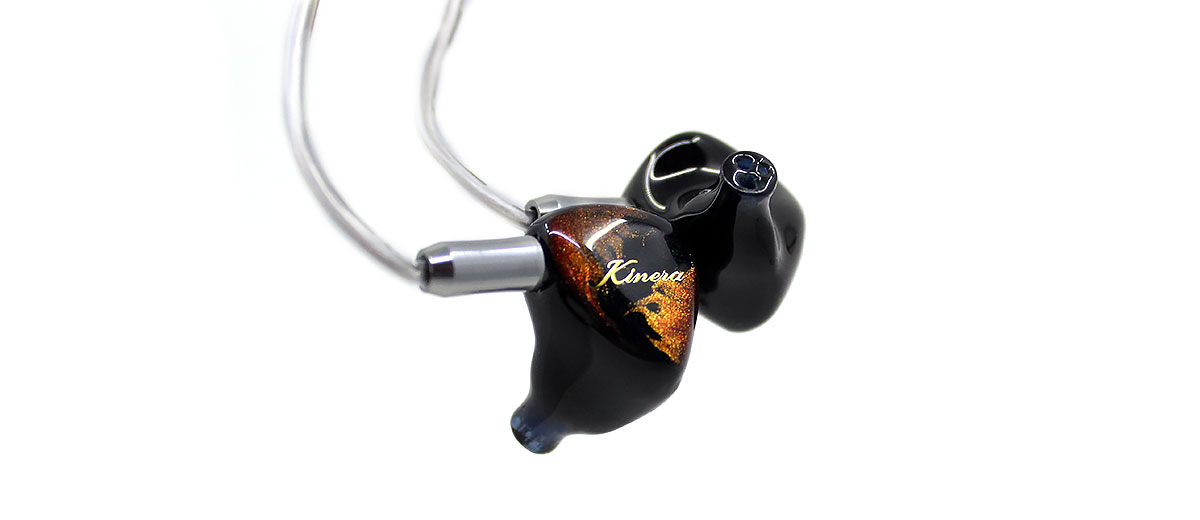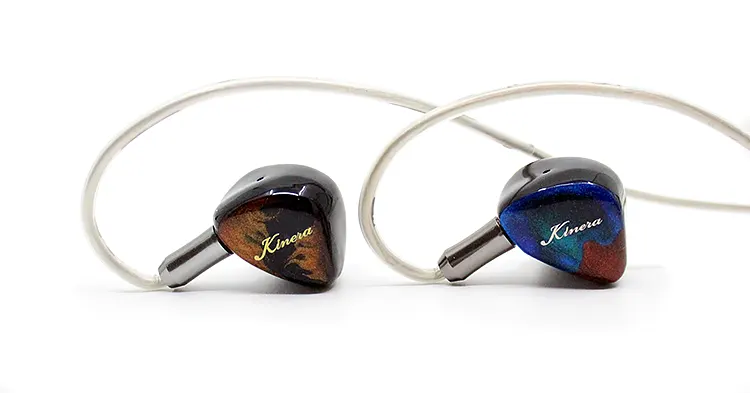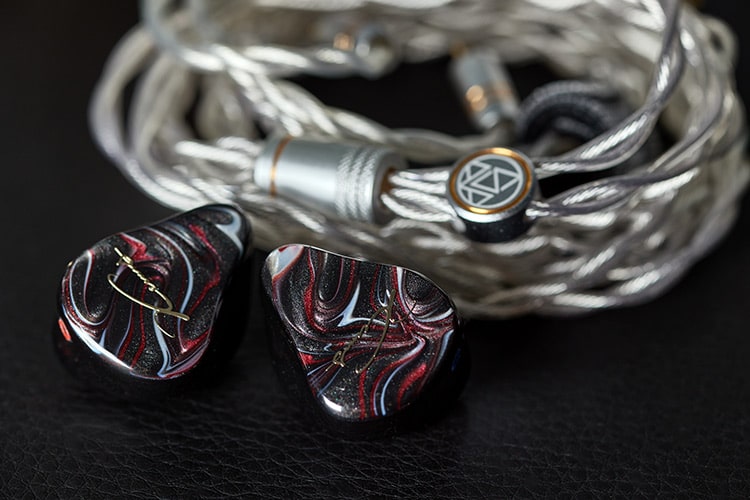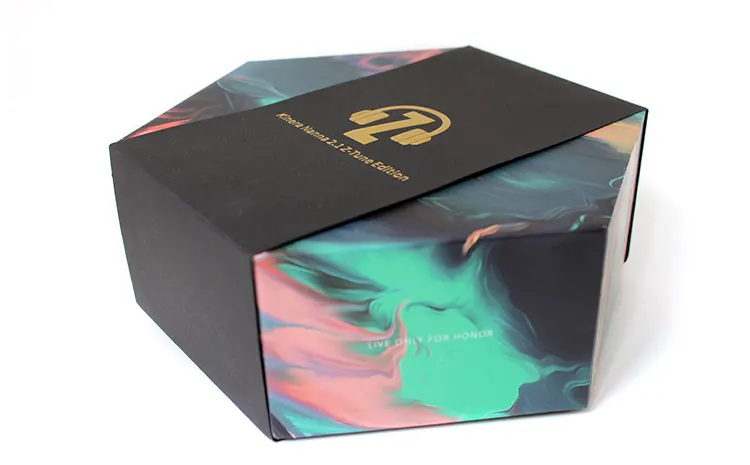Synergy
Efficiency
With an impedance rating of 60Ω and sensitivity of 110db, the Kinera Nanna 2.1 takes a bit of raw power to drive properly in order to achieve its maximum potential.
It produces high-quality sound whether it’s paired with a dongle or a DAP but it’s really about the power delivery which creates the wedge between a “very good” and “excellent” sonic performance.
As such, the Kinera Nanna 2.1 really benefits from dongles that have a medium or high gain setting and DAPs with additional power-boosting options. The Kinera Nanna 2.1 has a very black background where no hissing noises were detected during testing.
Pairings
If it isn’t obvious enough already, the Kinera Nanna 2.1 definitely benefits from sources that have more raw power output.
During testing, sources with a neutral or slightly warm timbre fared better with the Kinera Nanna 2.1 as it allowed the IEM to showcase its lush and smooth mid-range really well whilst not overdoing any of the other sound frequencies.
Amongst the favored sources during testing were the Cayin N8ii DAP and the Questyle M15 dongle.
Cayin N8ii DAP & Cayin N6ii Ti
The Cayin N8ii is a beast of a DAP and features both solid-state and Tube timbre modes. Furthermore, the Cayin N8ii features P+ mode which gives a power boost to the IEMs or headphones that are attached to it.
Using the Cayin N8ii in solid-state timbre and P+ mode produced the best overall sound from the Kinera Nanna 2.1 by a long shot.
The additional raw power and neutral timbre response were key in allowing the IEMs to achieve their maximum potential. The center to upper mid-range on the Kinera Nanna 2.1 received the required energy, clarity, and smoothness to deliver a highly resolving listening experience.
The mid-bass was able to benefit from this where the slam and texture of the mid-bass were very good. Compared to the Cayin N6ii Ti which has an R-2R configuration, the Kinera Nanna 2.1 had a very lush and smooth mid-range however it came with slightly less kick in the mid-bass and a smaller stage which was due to the lower amount of power output.
As such, the soundstage was taller and wider with better laying and separation on the Cayin N8ii.
Questyle M15 Dongle
The Questyle M15 dongle comes with a highly regarded ES9281AC PRO DAC chip which comes off as a neutral source. The M15 dongle features low and high gain settings allowing that extra amount of juice to flow into the headphone or IEMs that are connected to it.
The Kinera Nanna 2.1 benefits from this setting and when coupled with the neutral timbre of the M15, the IEMs simply bathe in it.
The M15 was the best dongle pairing with the Kinera Nanna 2.1 in my view, slightly outshining my trusty and reliable Cayin RU6. The pairing with the M15 results in excellent mid-range clarity where the soundstage is very wide and tall, especially for a dongle and portable device.
Select Comparisons
Kinera Nanna 2.0 Pro
$949
Technical
There is no other fitting comparison for the Kinera Nanna 2.1 than the Kinera Nanna 2.0 Pro – the original version.
Technical-wise, there is no difference between the two as the Kinera Nanna Pro 2.0 features the same hybrid IEM system housing 1 dynamic driver, 1 balanced armature, and 2 electrostatic drivers.
The Kinera Nanna 2.0 Pro has the same impedance rating of 60 ohms and sensitivity of 110 dB. This indicates that the Kinera Nanna 2.0 Pro requires the same amount of juice or power to drive compared to its latest counterpart in order to maximize sonic performance.
Design
The Kinera Nanna 2.0 Pro features the same type of IEM shells as the Kinera Nanna 2.1 with the main difference being the faceplate design. On the Kinera Nanna 2.0 Pro, the faceplates feature a simpler design with a glittery, blue, and orange finish. The words “Kinera” and “Nanna” on top of the right and left IEMs respectively in gold writing.
Outside of the IEM, the cable is made from the same 6n silver-plated oxygen-free copper material. However, the main difference here is that the Kinera Nanna 2.1 has a modular plug system that allows the interchanging of the plugs.
The Kinera Nanna 2.0 is supplied with adapters that need to be attached to the default plug type.
Performance
The main difference between the two IEMs is the 3.5db increase between the 5 Hz and 200 Hz regions. Interestingly, there is also a slight 1 to 2db increase between 200 Hz and 400 Hz.
The combination of the increase in overall dB within the bass and lower mid-range region results in not only a more forward mid-bass presentation on the Kinera Nanna 2.1 but also a thicker and fuller lower mid-range with more weight to each note.
The mid-bass on the Kinera Nanna 2.1 has more slam and slower decay in contrast to the Kinera Nanna 2.0 Pro’s mid-bass which is tighter, less forward, and faster to decay.
As the mid-range notes come off as fuller with more weight, the overall sound becomes more engaging on the Kinera Nanna 2.1. Timbre-wise, the Kinera Nanna 2.1 is warmer which is driven by the “dB” boost in the mid-bass and lower mid-range.
In terms of detail retrieval, both produce the same high quality in the mid-range whereas both IEMs produce a lush, smooth, and natural mid-range.
Treble detail and extension are similar between the two IEMs however the treble on the Kinera Nanna Pro 2.0 has more “airiness” and sparkle as the less forward mid-bass and cooler timbre allows it to become more obvious.
The soundstage is wide and tall on both IEMs however the Kinera Nanna 2.1 is slightly larger due to the increased bass and lower mid-range presence which makes the sound “feel” more expansive. Layering and separation are similar between the two with no significant difference.
Oriolus Szalayi
$890
Technical
The Oriolus Szalayi is a very unique IEM featuring 1 dynamic driver, 1 balanced armature, and 1 planar driver. The 10mm dynamic driver is designed to handle the bass frequencies, whilst the planar driver deals with the mid-range and the balanced armature with the treble region.
The Szalayi has an impedance of 10 ohms and a sensitivity of 110dB. However, due to the planar driver, the Szalayi takes just as much power as the Kinera Nanna 2.1 to drive properly.
Design
The Szalayi has an elegant and simple design. Each IEM shell comes in a 3D printed, royal blue color made from a photopolymer or light-activated resin. The faceplate features light and dark blue glitter which reflects any incoming light to give it a sparkly look and feel. The words “Oriolus” sit atop each faceplate.
The stock cable is a 4-wire, silver-plated, high-grade pure OFC (Oxygen Free Copper) cable with a 4.4mm termination. The cable jacket features a soft nylon finish in a jet-black color compared to the silver-colored cable from the Kinera Nanna 2.1.
Performance
The most obvious difference between the Szalayi and the Kinera Nanna 2.1 is within the sub and mid-bass. The sub-bass digs deeper and the mid-bass is much more forward with more slam and slower decay on the Szalayi.
Bass notes feel heavier with more depth on the Szalayi compared to the Kinera Nanna 2.1 where the mid-bass comes off as snappier with better control in comparison. Within the mid-range, both IEMs have a forward lower to center mid-range however the overall mid-range on the Kinera
Nanna 2.1 has better tonal balance and coherence within the overall frequency response. This is because there is less interference from the mid-bass seeping into the mid-range which allows mid-range notes to become more apparent and defined.
Although the mid-range on both IEMs is highly detailed, the Kinera Nanna 2.1 edges the Szalayi in terms of clarity and detail retrieval.
Timbre between IEMs is similar and comes off as slightly warm. Treble is brighter on the Kinera Nanna 2.1 and comes off with better extension and detail compared to the Szalayi.
The soundstage on both IEMs is similar and is very wide and tall. The Kinera Nanna 2.1 has the edge when it comes to Layering and separation as there feels to be better spacing between instruments and vocals.
Mangird Xenns UP
$700
Technical
The Mangird Xenns Up is a tri-brid IEM similar to that of the Kinera Nanna 2.1 and features 1 dynamic driver, 4 balanced armatures, and 2 Electrostatic Drivers.
For those who need details, the ESTs are Sonion EST65DA01 ultra-high frequency drivers, which are the same drivers used in the Kinera Nanna 2.1. The dynamic driver is a 10mm beryllium-coated driver which is slightly bigger than the 7mm dynamic driver included in the Kinera Nanna 2.1.
Design
The Mangird Xenns Up IEM comes in a jet-black color featuring a hand-painted faceplate that dons a white and red sandstone texture.
Amidst all of this, the faceplate is topped off with a light layer of glitter giving with the word “Xenns” written on each faceplate in light gold. The shells are made of resin making them lightweight and easy to handle.
Performance
The Xenns Up’s sub-bass digs deeper which is coupled with a more forward mid-bass compared to the Kinera Nanna 2.1. The mid-bass on the Kinera Nanna 2.1 comes off as tighter and faster compared to the Xenns Up however there is better control and faster decay on the Kinera’s.
The lower and center mid-range on the Kinera Nanna 2.1 is more forward and prominent in the overall frequency response. Furthermore, the mid-range is smoother and more resolving on the Kinera Nanna 2.1 resulting in better detail retrieval.
The Timbre on the Xenns Up is warmer compared to the Kinera Nanna 2.1 which is due to the more forward mid-bass. Treble extends further on the Kinera Nanna 2.1 with more detail and clarity.
The soundstage is wider and taller on the Kinera Nanna 2.1 which results in better layer and separation.
Our Verdict
The Kinera Nanna 2.1 is definitely an IEM to look out for in the sub $1,000 category.
When connected to the right source and with ample amounts of power, the Kinera Nanna 2.1 Z Tune Edition provides a thoroughly lush mid-range, adequate bass response, and well-extended treble.
There is an excellent level of cohesion and tonal balance resulting in an enjoyable listening experience.
Kinera Nanna 2.1 Z-Tune Edition Specifications
- 2 Sonion EST + 1 Mids Sonion BA + 7mm Dynamic Driver
- Impedance: 60 ohms
- Sensitivity: 110dB±2db
- Frequency Response: 5Hz-50kHz
- 6N OCC with Silver Plated Cable
- 4mm Termination Plug







